In the past, it wasn’t unusual to see service dogs and their owners out together in public. The sight of a German shepherd leading someone with a vision impairment probably wouldn’t turn any heads. Today, there are just as many as, if not more emotional support animals (ESAs), and some will definitely turn people’s heads. In this article, we’ve put together a list of the 36 strangest emotional support animals that people actually have.
1. Emotional Support Dolphins
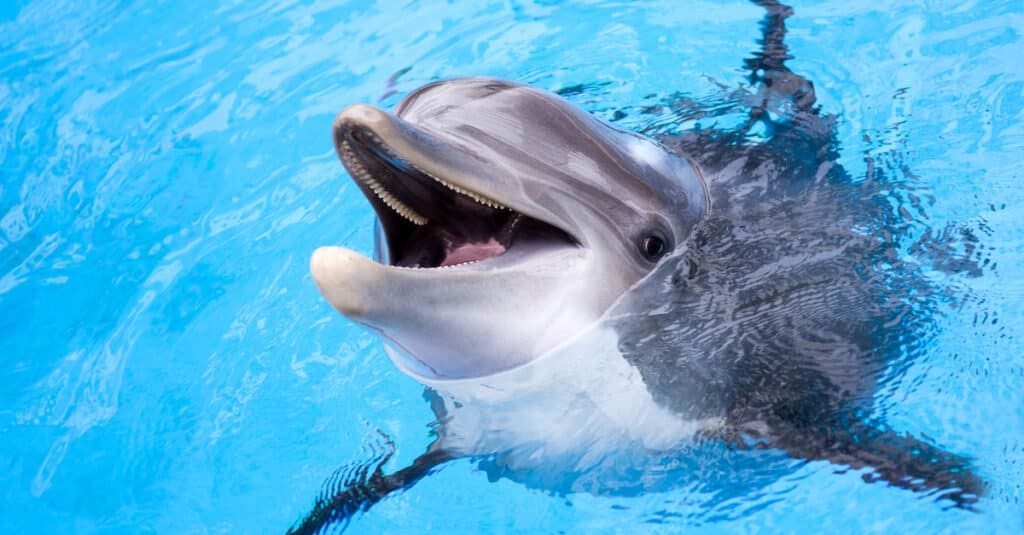
Like dogs, dolphins are playful and sociable, and they show signs of compassion and altruism.
©Irina No/Shutterstock.com
Imagine having a dolphin as your emotional support animal. These highly intelligent and gregarious mammals seem like otherworldly companions. And, where would you even keep this wonderful ESA? Would you need an Olympic-sized pool in which to keep it?
The answer is no, you wouldn’t need a pool. In fact, Dolphin Human Therapy provides everything for you. This company based in Miami provides special needs adults and children with unique opportunities for “dolphin-time.” They offer individualized emotional support, creating a one-on-one supportive relationship between the person and the dolphin.
2. A Not-So Thick-Skinned Alligator
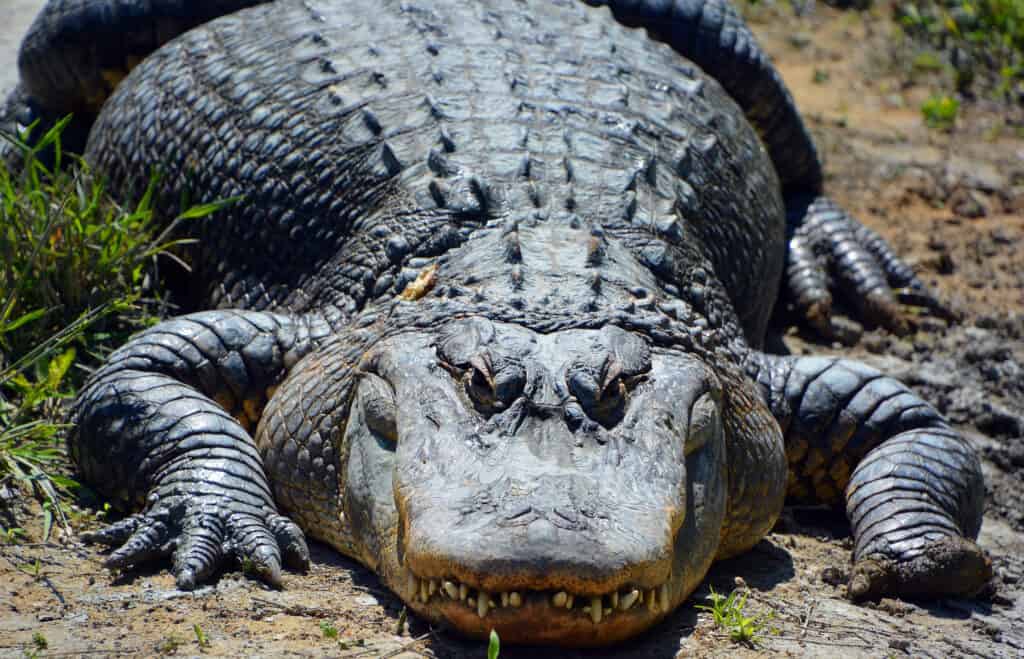
While the sight of an
alligator
would make most of us run away in fear, some people actually keep these large reptiles as their emotional support animals.
©meunierd/Shutterstock.com
Adult alligators can reach up to more than 1,000 pounds. They grow to be 9 to 15 feet long. These meat-eating reptiles have about 75 teeth with a bite force of almost 3,000 pounds per square inch. How could anything go wrong with having one as a companion?
In September of 2023, Wally the ESA alligator became the center of attention when his human brought him to the Citizens Bank Park to meet the Phillies players. The human, John Henney, has had Wally as his emotional support animal for the past eight years. This particular gator has over 114,000 TikTok followers and over 27,000 followers on Instagram.
3. Consoling Kangaroo
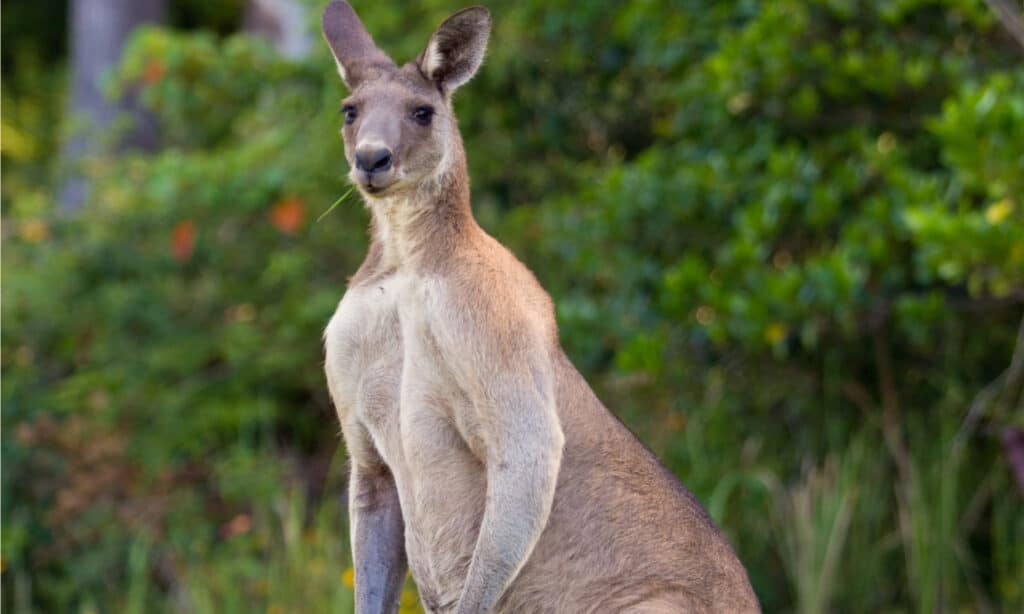
Kangaroos are quite powerful and large. Yet they’re one of the 35 strangest emotional support animals that people actually have.
©kimonofish/Shutterstock.com
Acquiring a bouncy companion that can reach over 6 feet tall and weigh 200 pounds isn’t the typical prescription for depression. The powerful hind legs of a kangaroo can break a human’s bones, and their sharp claws can injure people’s eyes and flesh. Yet, there are some kangaroos in Beaver Dam, Wisconsin, that are one woman’s emotional support animals.
Diane Moyer and her husband live on a 70-acre Wisconsin farm. In 2008, they bought their first joey at an exotic animal auction. Since that time, she’s added more kangaroos to her mob. In 2017, though, a local Beaver Dam resident called the police when Diane showed up with a joey at the area’s McDonald’s. She showed the officer the note from her doctor explaining how the young kangaroo was an ESA for her cancer and depression and did get to finish her meal.
4. Camel Care
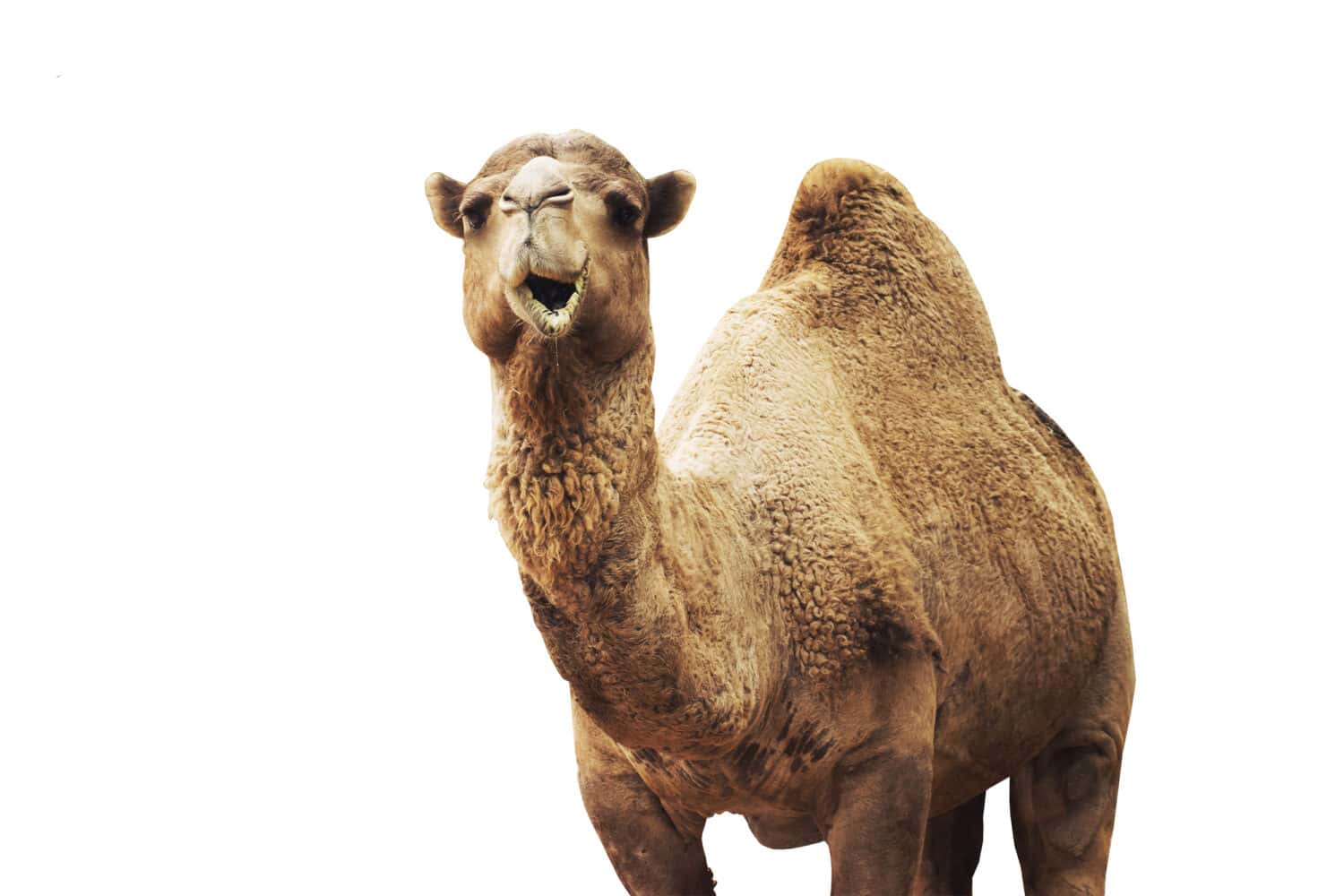
Despite their intimidating size, owners use camels to provide comfort for terminally ill patients.
©lovely pet/Shutterstock.com
Can a camel cause injuries to people? The answer is yes. According to the National Institute of Health, most camel-related deaths and injuries are caused by people being stomped, kicked, sat upon, bitten, shaken, or thrown. They can grow to over 7 feet and weigh over 1,300 pounds — a fact that makes them a physical threat on their own.
For Rob and Robin Lyon of the Lyon Ranch in Sonoma, CA, camels are the opposite of threatening. They’ve been raising camels for years and using them to bring comfort to people and children who are terminally ill. The Lyons are meticulous in preparing these camelids to ride elevators, be polite inside hospice rooms, and gently nuzzle and comfort dying patients.
5. Emotional Support From a Wolf

Wolves are wild animals that don’t typically want to be around people.
©slowmotiongli/Shutterstock.com
Despite being so closely related to dogs, you can’t easily train or tame wolves. They just don’t have the same instinctual affiliation to humans that dogs have. Despite the fact that wolves are inherently wild animals, Nick Battles adopted a North American grey wolf as a 6-week-old cub. This cub named Kodie helps Battles know when the diabetic owner needs to take his insulin as well as offering him emotional support.
6. Compasstionate Cows
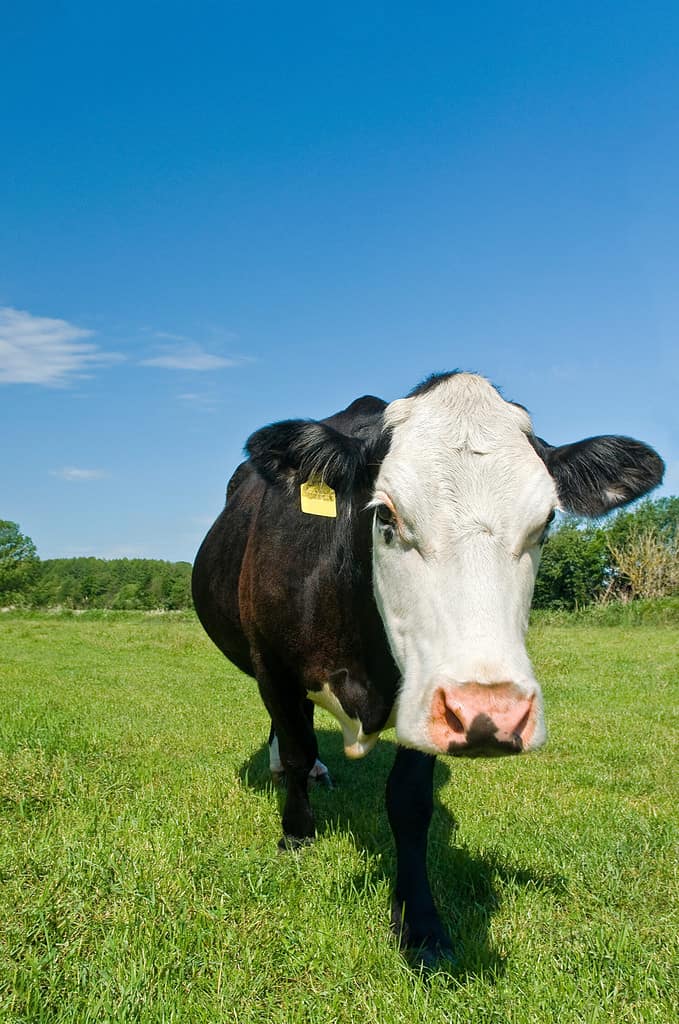
The Gentle Barn’s founder explains that cows are compassionate and mindful animals.
©mahey/Shutterstock.com
With their big brown eyes and gentle lowing, cows look like innocuous barnyard animals. Nevertheless, there are 20 to 22 people who are killed by cows each year, which is more than the number of annual shark attacks on humans. They’re also much too big to be cuddled on your lap or taken on a car ride. Yet, some of these bovines are used to provide comfort and emotional support to people.
In the organization’s peaceful, pastoral venues in Los Angeles, CA, Nashville, TN, and St. Louis, MO, The Gentle Barn offers cow-hugging therapy. Anyone in need of some emotional support can visit one of these locations to spend an hour hugging one of the cows, meditating with them, and receiving reassurance from them. While the founder, psychology major Ellie Laks, reports that cow-hugging therapy works, the U.S. Centers for Disease Control and Prevention warns that farm animals can carry harmful germs and reminds any cow huggers to immediately wash their hands after their emotional support encounters.
7. Emotional Support Turkey

The turkey that was brought onto the 2016 Delta flight was not wearing a diaper, which creates many questions and concerns.
©iStock.com/Robert Winkler
Some people may look at turkeys as merely a food source. Others consider their physical appearance rather off-putting. Their fleshy caruncles, strange-looking snoods, and wiggly wattles all lend to their truly unique appearance. For others, however, this feathered friend provides companionship and support.
Back in 2016, airlines were still required by the Air Carrier Access Act to accept all emotional support animals on their flights if the passenger presented the proper documentation. At that time, a woman brought her turkey onto a Delta flight as her ESA. She apparently rolled the turkey through the airport in a wheelchair and then brought it with her onto the plane.
8. Loving Llama

Rojo, the llama, is one of our 35 strangest and most unique support animals that people have.
©jeanxfranco/Shutterstock.com
Llamas, when raised properly, can be very gentle animals. They have soft fur and doe-like eyes that make them appealing animals to many. Yet, their size doesn’t put them first on everyone’s list of emotional support animals.
Lori and Shannon Gregory, a mother and daughter from Oregon, have a llama named Rojo. They originally bought him, along with an alpaca named Napolean, to keep their grass in check on the land they owned. Eventually, the two decided to have Rojo certified as a therapy animal and brought him to visit hundreds of people who have enjoyed his emotional support.
9. Peaceful Peacock Presence
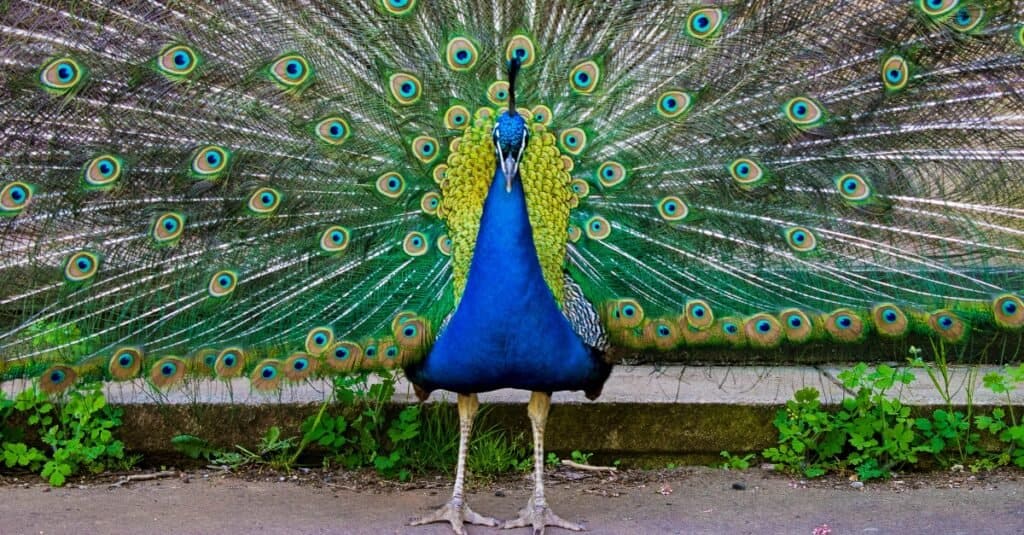
The Brooklyn artist, Ventiko, originally bought Dexter as inspiration for her art.
©iStock.com/Anna_Brothankova
Peacocks, particularly the males, are elegant and stunningly gorgeous birds. When they walk across the lawn with their ornamental plumage on parade, they make for a striking picture. Conversely, when they sit outside your window in the early morning hours making their ear-splitting hoots, neither you nor your neighbors may find them so enticing.
Peacocks are domesticated birds that can be tamed. However, they are not cuddly and affectionate, which begs the question of just how they provide emotional support to a human. Notwithstanding, a Brooklyn artist brought her ESA peacock, Dexter, with her to board a flight from Newark, NJ to Los Angeles. Unfortunately, United Airlines denied her peacock a ticket.
10. Emotional Support Miniature Donkey
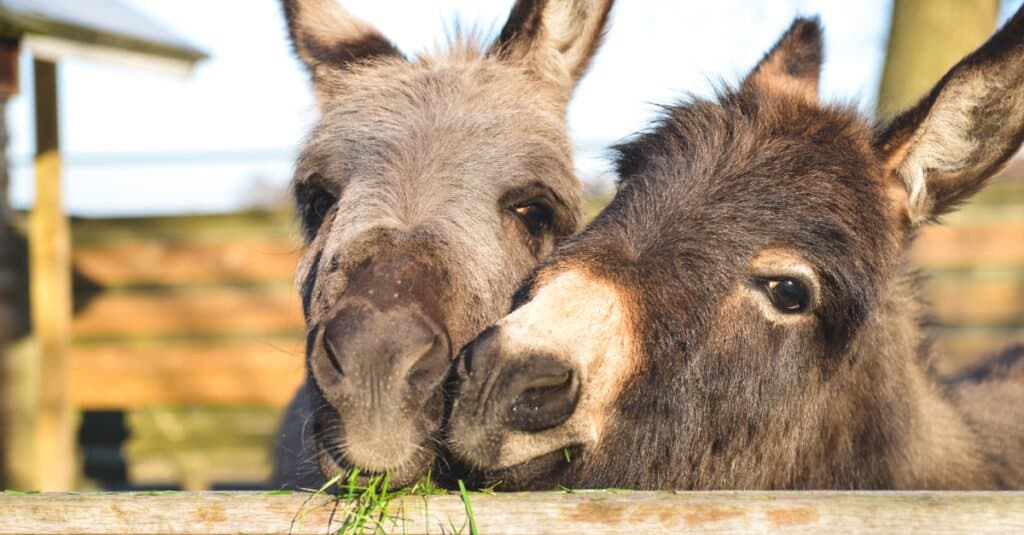
Miniature donkeys are calm, attentive, and intelligent animals.
©babeaudufraing/Shutterstock.com
Miniature donkeys are not only popular as ESAs and therapy animals in the United States, but are popular in many other countries as well. They’re loving animals, and their size puts them at eye level with people who need wheelchairs for mobility. There are many places that use miniature donkeys as ESAs, such as Painted Promise Ranch in Arizona.
11. Monkeys Can Be Emotionally Supportive
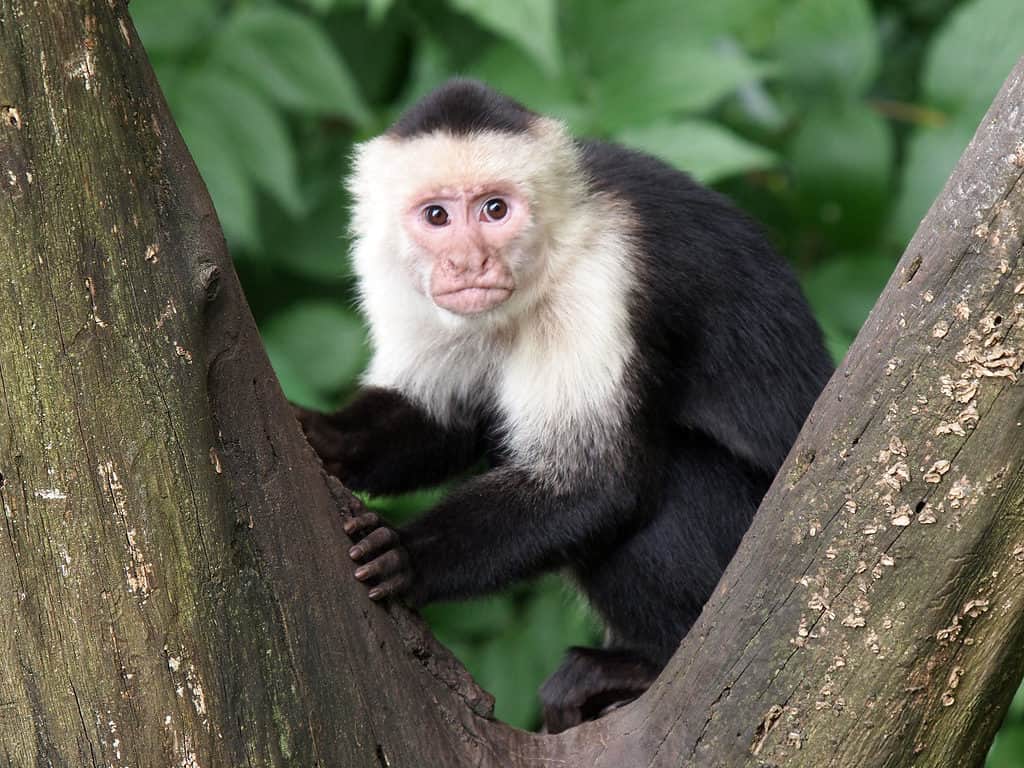
Capuchins and other monkeys are born with an intense bond to their mothers and grow to need room for movement, exploration, and social interaction with others of their species.
©Edwin Butter/Shutterstock.com
Capuchin monkeys have been trained as service animals for quadriplegic patients, serving as their hands. They’re often called helper monkeys because of their ability to be trained to help those who need things grasped, picked up, or operated. While they’re also used as emotional support animals, there are biologists and other experts who argue that using the monkeys in this way is contrary to their natural way of living and, therefore, is cruel.
12. Tarantulas as ESAs

Despite their fearsome reputation, tarantula venom toxicity is actually quite rare, making them suitable as pets and emotional support animals.
©User: Fir0002, CC BY-SA 3.0, via Wikimedia Commons – License
Tarantulas have become so popular as pets that several tarantula groups have formed on Facebook. According to a therapist on one tarantula forum, the interest in and care for their pet tarantulas has pulled many people out of deep depression. The therapist themself talked about their pet, Spidey, who helps them deal with ongoing anxiety.
13. Emotional Support Bearded Dragon

Bearded dragons are responsive pets who can offer emotional support to their owners.
©Ken Griffiths/Shutterstock.com
Bearded dragons have become one of the most popular lizard pets around. These little lizards are friendly, lively, and social creatures. They are curious, tame, and show sensitivity to and awareness of their owners. A high school girl named Megan Curran from Texas told a reporter that her bearded dragon, Chief, has helped her in her struggle with depression and anxiety.
14. Hedgehog Haven
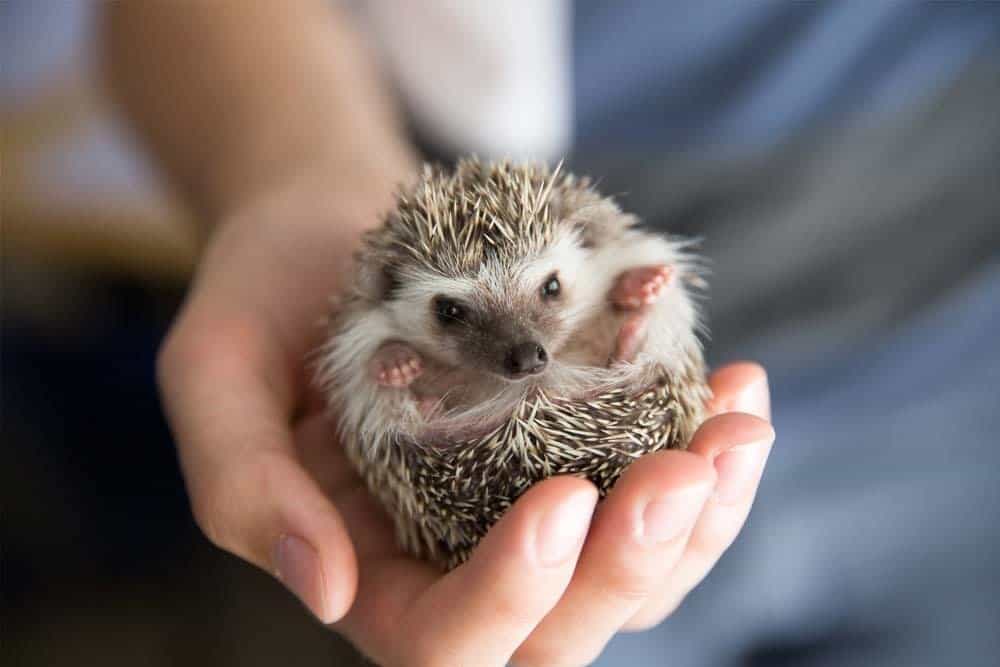
Some studies have proven that hedgehogs will respond to their owner’s voice.
©Elijus3000/Shutterstock.com
These adorable little creatures can bring joy to people simply by their physical appeal. Though their backs are full of little spiky barbs, their tummies are soft and lend themselves to a soothing rub. Moreover, these little bundles of charm aren’t merely cute. They’re able to learn particular behaviors through positive reinforcement, making them strange but amazing little ESAs.
15. Ferrets For Feeling Better

One of the 35 strangest emotional support animals that people have, ferrets can provide affection and unconditional love to their owners.
©iStock.com/Tatyana Consaul
These long-bodies creatures are related to wolverines, weasels, minks, and ermines. They’re controversial, though popular, even as mere pets. Yet, many people avow that their playful natures blended with their natural ability to entertain and bond with humans make them highly suitable emotional support animals.
16. Big Support From a Miniature Horse

The ADA recognizes miniature horses as potential service animals.
©Julia Remezova/Shutterstock.com
Up until early December 2020, airlines were required to allow almost any kind of emotional support animal to fly with its owner. Then, at the end of 2020, the US ruled that airlines could ban all emotional support animals from flying. This was largely due to the worldwide abuse of ESA documentation and people using it to get their pets documented falsely.
The Americans with Disabilities Act of 1990 (ADA) recognizes dogs, miniature horses, pigs, and monkeys as service animals that can fly on planes with their owners. However, this requires intense training of the animal and even more documentation. While a miniature horse may be certified as an emotional support animal, this doesn’t ensure its acceptance on planes or in other public places.
17. Ducks as Emotional Support Animals
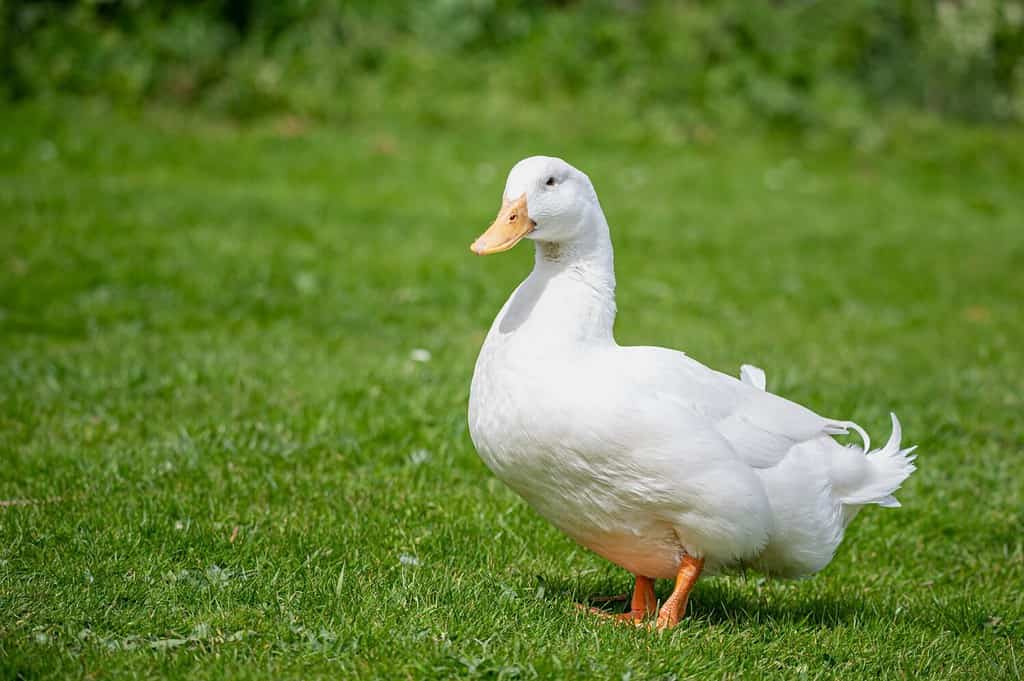
Even though ducks don’t usually get the okay for ESA use, those with emotional support ducks argue that this animal makes an excellent companion and ESA.
©Andi111/Shutterstock.com
In October 2016, Carla Fitzgerald took her duck, Daniel, on a flight from Milwaukee to Asheville. Most people on her American Airlines flight were reportedly delighted to see her emotional support animal with her. Of course, Daniel Turducken Stinkerbutt was wearing little red shoes and a Captain America diaper which made him irresistibly adorable.
18. Emotional Support Pigs
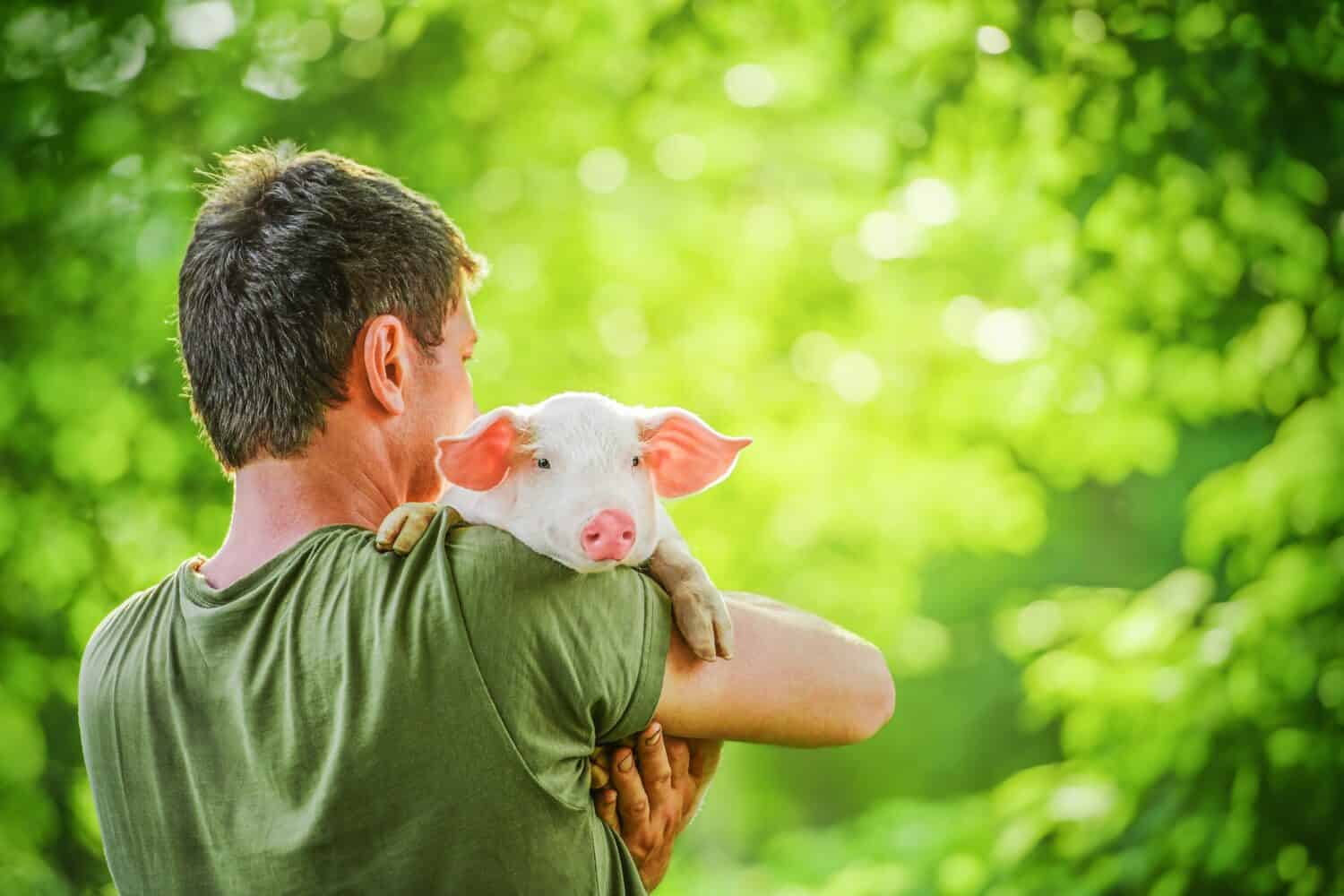
As strange as it may seem, pigs are actually quite popular as emotional support animals.
©The Len/Shutterstock.com
Pigs are clean, intelligent animals that can easily bond with their owners. They are actually as trainable as dogs. Though they can make suitable ESAs and are even recognized as potential service animals by the ADA, these little piggies can grow quite large and be rather stubborn. In fact, in 2014, a woman and her 80-pound emotional support pig had to leave the plane when the pig began defecating in the aisle and howling loudly enough to bother the other passengers.
19. Marmosets Bringing Emotional Support

Marmosets are social creatures who need to be around others of their species in their native habitats.
©iStock.com/Bob_Eastman
They’re small, human-like, and sociable. What could possibly go wrong with keeping one as an emotional support animal? The answer is plenty. These intelligent creatures get bored easily, causing them severe stress. They mark their scent all over their environment. Most importantly, coming from a tropical and complex habitat, their needs can’t be met easily.
Despite the issues and controversy with owning marmosets as pets of any kind, there are people who do decide to keep them as emotional support pets anyway. However, without proper documentation, the owner risks being kicked off of flights. This happened to Jason Ellis whose marmoset, Gizmo, didn’t have the ESA documentation needed, which got them both booted off their flight.
20. Snakes on a Plane
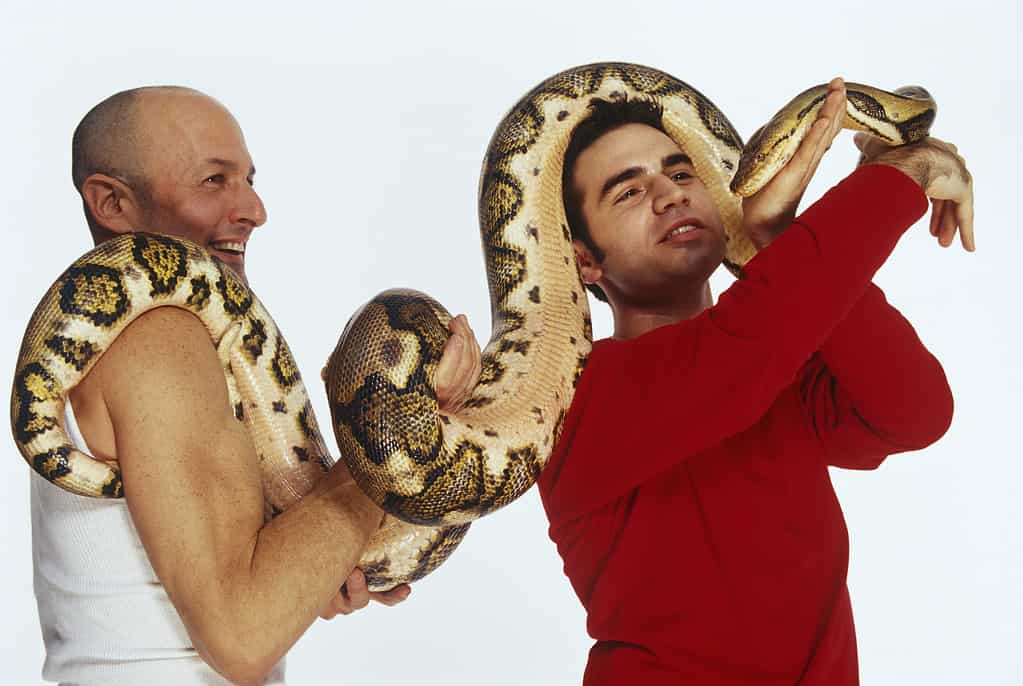
Some people claim that the natural instinct for snakes to squeeze provides a hug-like pressure on them, creating emotional support and comfort from one of the strangest ESAs that people actually have.
©Creatas/Creatas via Getty Images
The 2006 Samuel L. Jackson film, Snakes on a Plane, was an American action horror movie that had some people leery of flying for a time after seeing it. Although emotional support snakes are no longer accepted on airlines, one was accepted but then left behind in 2017. A passenger had forgotten his ESA reptile on the plane and it ended up staying on for the next flight.
The snake on this flight from Tampa to Newark turned out to be a rather innocuous garter snake. A little boy spotted it sleeping, so airline staff scooped it up and put it into a plastic bag and into the overhead bin until reaching down to their next destination.
21. Emotional Support Chickens

Stepney City Farm in London provides chickens for emotional support at daycare centers and senior residential homes.
©Nynke van Holten/Shutterstock.com
Chickens aren’t merely barnyard denizens. They’re also great emotional support animals. They enjoy sitting on their owner’s lap and being petted and stroked. It was when Nikki Pike decided to take care of someone’s three chickens for a weekend that she realized how much they helped her anxiety. She’s owned emotional support chickens ever since.
22. Goldfish as Emotional Support Animals

They don’t respond to or make contact with their owners, but these little fish are still one of the strange emotional support animals that people have.
©LUIS PADILLA-Fotografia/Shutterstock.com
It’s difficult to imagine how goldfish can serve as emotional support for people since they’re constrained to fish bowls and can’t cuddle with you. Yet, some people may find that watching them swim around in their bowls meditative and calming. In fact, on a March 2018 flight from Albany, one such person forgot their goldfish at airport security.
23. Emotional Support Goats
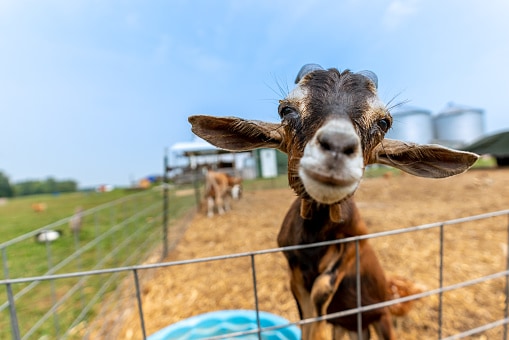
Even though people keep goats as pets and ESAs, it’s important to remember that they’re herd animals and need to be around others of their kind.
©Brian Koellish/iStock via Getty Images
Goats are emotionally intelligent animals with the ability to discern human emotions. Just by looking at someone’s face, a goat can see whether or not a person is happy. Goats are such popular and abundant emotional support animals that American and Alaskan Airlines won’t allow them on board flights anymore.
24. Parrots and Emotional Support
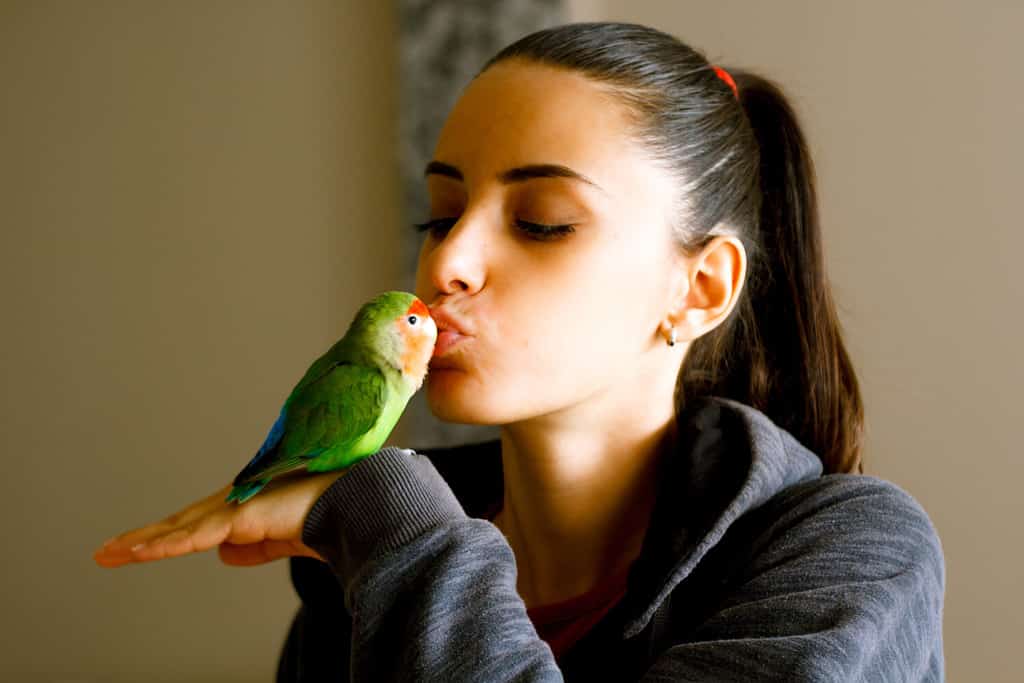
Trained Parrots can sense when their owners become stressed or angry and then use soothing phrases to calm them.
©Dusan Stevic/Shutterstock.com
Parrots are one of the most intriguing of the bird species. They’re colorful and exotic-looking, and they can talk. It’s because of how interactive they are that they have become more common as ESAs. Charities like Parrots for Patriots rescue these birds and then provide armed service veterans with them as emotional support and companions.
25. Sugar Gliders as Emotional Support Animals
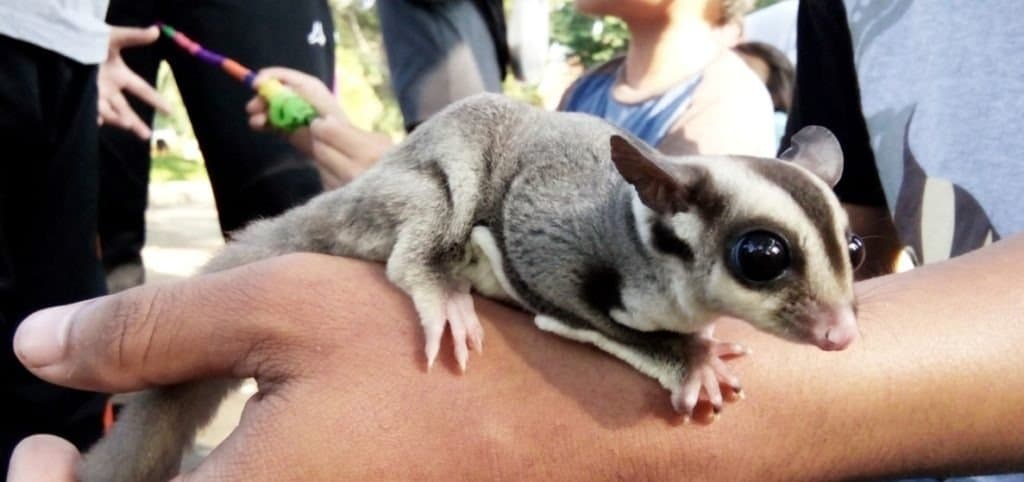
Sugar gliders may bite their owners during their “teenage” years, either for no reason or if they’re frightened, stressed, or provoked.
©rizka ku/Shutterstock.com
From their big round eyes to their long furry tails, sugar gliders are charming little animals. Sugar gliders are becoming more popular as exotic pets and emotional support pets. However, these little marsupials are nocturnal, so they won’t really be able to offer much comfort during the day.
26. Squirrel ESAs

Once someone “domesticates” a
squirrel
, the animal won’t survive in the wild anymore.
©Saeedatun/Shutterstock.com
Squirrels are those cute little rodents with the big bushy tails. Though they truly are wild creatures, people often try to domesticate them. However, once they’re “domesticated,” people can actually train squirrels to use a litter box for toileting.
Some cities and states have laws against keeping these little rodents as pets. In 2017, a Florida man rescued a squirrel after Hurricane Matthew had struck. He kept it as an emotional support animal. Unfortunately, his landlord still threatened to evict him if he didn’t let it go.
10 Other Strange Emotional Support Animals That People Actually Have
- Roosters – In Plymouth, MA, an ESA named Little G has his neighbors up in arms over his noisy crowing.
- Tortoises – One woman successfully brought her tortoise named Herman with her on a flight.
- Rats – In addition to being successful ESAs, rats can also be used as service animals. They can sense and identify muscle spasms in people who can’t detect them when properly trained.
- Turtles – Aren’t turtles the same as tortoises, you might ask. The answer is no. Unlike the land-dwelling tortoise, turtles can be in water most or all of the time. Perhaps they offer a damper emotional support than their land-roving relatives.
- Pigeons – Cynthia Zhou has a tame and affectionate pigeon named Miu as her ESA.
- Guinea Pigs – In 2013, a Michigan Grand Valley State University student had to file a lawsuit against the school in order to keep her emotional support guinea pig in her dorm room.
- Iguanas – Californian Cosmie Silfa’s iguana Skipper is a qualified service iguana.
- Chinchilla – Some people choose chinchillas for support due to their extremely soft fur and adorable features.
- Geese – One ramp agent reported on Reddit that he saw a passenger walking through the airport with a goose as an ESA.
- Sheep – An organization called Out of the Ashes vets their sheep as emotional support animals.
Summary Table of the 35 Strangest Emotional Support Animals

©Kellie Sheridan/Shutterstock.com
| Number | Emotional Support Animal |
|---|---|
| 1 | Dolphin |
| 2 | Alligator |
| 3 | Kangaroo |
| 4 | Camel |
| 5 | Wolf |
| 6 | Cow |
| 7 | Turkey |
| 8 | Llama |
| 9 | Peacock |
| 10 | Miniature Donkey |
| 11 | Monkey |
| 12 | Tarantula |
| 13 | Bearded Dragon |
| 14 | Hedgehog |
| 15 | Ferret |
| 16 | Miniature Horse |
| 17 | Duck |
| 18 | Pig |
| 19 | Marmoset |
| 20 | Snake |
| 21 | Chicken |
| 22 | Goldfish |
| 23 | Goat |
| 24 | Parrot |
| 25 | Sugar Glider |
| 26 | Squirrel |
| 27 | Rooster |
| 28 | Tortoise |
| 29 | Rat |
| 30 | Turtle |
| 31 | Pigeon |
| 32 | Guinea Pig |
| 33 | Iguana |
| 34 | Chinchilla |
| 35 | Goose |
| 36 | Sheep |
The photo featured at the top of this post is © Beyond My Ken/ CC BY-SA 4.0 – License / Original
Thank you for reading! Have some feedback for us? Contact the AZ Animals editorial team.







